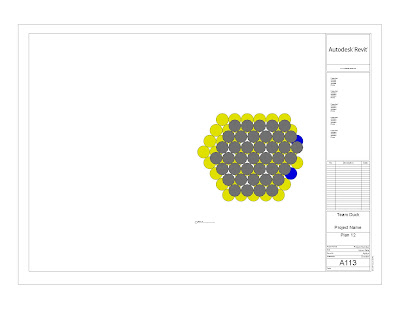Wednesday, August 15, 2012
Tuesday, August 14, 2012
Monday, August 13, 2012
Sunday, August 12, 2012
Friday, August 10, 2012
Wednesday, August 8, 2012
Thoughts about BIM to date….
Because BIM allows so many drawings to be
produced from the same source, it seems that it has allowed architects to
create more drawings faster, and more detailed than before. There are
possibilities for hybridized drawings, 2D + 3D, that were previously much
harder to achieve. I think it allows for more clarity as well, making the
drawings richer in information.
The design process becomes more cohesive
from the beginning because the architects are able to see the totality of the
model and the drawings all at once. This changes the design process radically
because the plan is no longer the “baseline” from which the design process
begins.
It is also evident that to make good use of
BIM modeling tools the designer needs to have a good understanding of building
construction, tectonics and such. The program is very detailed, which makes it too
complicated for someone that has no understanding of construction. Yet it is
also a great learning tool.
The use of new software always leads to new
problem solving skills because the user is limited by the possibilities of the
program. Yet this also gives the opportunity for the creative use of the
software to overcome the challenges. Creative thinking often results from these
hardships.
I think BIM will enhance investigation of
design opportunities in digital medial because the kind of simultaneity that it
allows (plan, section, 3d, perspectives, all in real time) can lead to new
investigations. Form becomes more complex, and the ability to build such forms and
geometries is more reachable to the architect when she uses this type of software.
Tuesday, August 7, 2012
"Change or Perish" by Thom Mayne
Change or Perish
By Thom Mayne
This article reads as a manifesto on the future of
architecture. Thom Mayne takes the very strong stance that if architects do not
adapt and evolve with the advances of technologies and the way they can change
design process, then architecture will “perish.” He claims that computer
modeling has changed the way architects design, that two dimensional
representation such as plans are sections are “dead” because with computer
modeling the architects can view design in whole, what he calls a “new
totality.” It’s interesting that this resonated with the previous readings
where the authors also claim technology is allowing the architects to reclaim
their status as builders, because with these new tools there is much more
control, and emphasis on, construction methods. The authors talk about architecture
as a representation of making and rather than as one-dimensional ideas that are
often concentrating on style. “Survive or Perish,” is his message. Although
that is very blunt, it seems to make absolute sense. The older ways of thinking
and producing just don’t seem to compare with these newer methodologies.
Subscribe to:
Comments (Atom)

















































